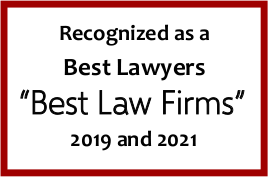Good plaintiff contingency cases require: (1) established liability; (2) adequate damages; and (3) a source from which to fully recover those damages. In auto accident cases, often liability is clear, and the injuries suffered (or death) create significant damages. But if the negligent driver has minimal auto insurance coverage, in most cases the recovery is limited to the amount of available insurance. This leads to searching for other potentially available insurance. A circumstance that aids in that search is when a negligent driver was working at the time of the accident. The law extends liability to employers for negligent acts of employees committed during the course and scope of employment. In such circumstances, this implicates the employer’s insurance policies which usually have much greater limits of coverage than most individual auto insurance policies.
Proving course and scope of employment generally requires facts that the employee was acting in furtherance of and for a purpose to serve the interests of the employer. It is generally accepted that for the employer to be vicariously liable for the negligent acts of an employee, the employee must have been in some manner under the “control” of the employer. There are also many exceptions to work-hours conduct that shields an employer from vicarious liability, such as when an employee negligently causes an auto accident while on a “frolic” or “detour,” a deviation from work where the employee drives for a solely personal purpose, such a deviating from the work route to go pick up dry cleaning and the accident happens while en route to the dry cleaner. Thus, the path to the employer policy based on vicarious liability requires that the plaintiff present facts that an employee was acting in furtherance of the interest of the employer, serving some interest of the employer, at the time of the accident, and that no exceptions apply to employer vicarious liability.
But what even the most competent of plaintiff lawyers can easily over-look is that many employer auto policies should result in coverage for the loss even without having to prove the employer vicariously liable. Common extended coverage endorsements are often purchased by employers that expand who is defined as an “insured” under the policy. The language of such an endorsement typically provides: This Endorsement amends SECTION II – LIABILITY COVERAGE, A. Coverage, 1. Who is an insured, as follows:
The following are “insureds”:
3. Any of your “employees” while using a covered “auto” in your business or your personal affairs, provided you do not own, hire or borrow that “auto.”
Under such an endorsement, employees are insureds so long as the employee was using a covered auto at the time of the accident. The standard “NONOWNED AUTOS ONLY” coverage defines a covered auto under that coverage as: Only those “autos” you do not own, lease, hire, rent or borrow that are used in connection with your business. This includes “autos” owned by your “employees”…or members of their households but only while used in your business or your personal affairs.
If the policy defines “insured” to include employees in covered autos, a plaintiff likely will not need to prove course and scope of employment to establish employer liability to implicate coverage under the policy, but only that the insured employee was using a vehicle at the time “in connection with” the business. What that term means is standard policy language interpretation, which is a legal issue for a judge.
Arizona courts that have considered that phrase “in connection with” in the context of an insurance policy have defined that term to mean a “link,” “association,” or “relationship.” Cal. Cas. Ins. Co. v. Am. Family Mut. Ins. Co., 208 Ariz. 416 (App. 2004). The relevant coverage question then is whether the auto the employee was driving was an auto used in connection with the employer’s business, and that condition should be satisfied so long as the facts establish a “link,” “association,” or “relationship” between the business and the use of the auto. Thus, the evidence required to implicate coverage under such a policy that extends coverage to employees is arguably much less than what is necessary to prove employer liability. Any “link,” “association,” or “relationship” between the use of the auto at the time of the accident and the employer’s business should suffice to obtain coverage for the loss under the employer policy.
In any case asserting employer vicarious liability, Plaintiff lawyers must obtain the employer’s insurance policies, including all endorsements, to determine if insureds under the policy includes employees. If so, there may be two paths to coverage under the employer’s policies, and the path to policy coverage through the insured employee may be a significantly easier one to prove.If you know of an individual that has been injured refer them to the Personal Injury Attorneys at Mesch Clark Rothschild to assist with the recovery for their losses.


